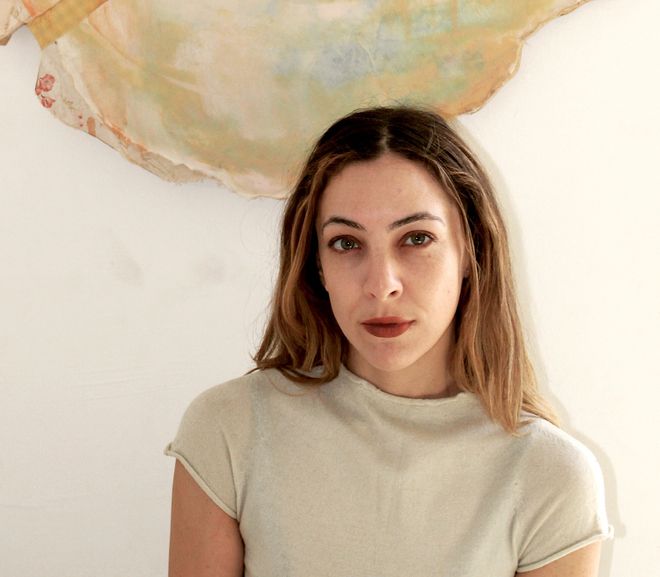
She is also passionate about advancing the field of fashion studies, and in 2013, co-founded the London-based Fashion Research Network, a platform for the work of early-career interdisciplinary researchers. It is also a space to widen definitions of fashion and thus approaches to its study, notably via symposia on themes such as, “Curative Things: Medicine/Fashion/Art,” “Fashion Unraveled: Memory, Wear and Imperfection in Dress,” and “Documenting Fashion: Re-thinking the Experience and Representation of Dress.”
What attracted you to the BGC’s program?
I was a graduate student in Paris studying art history when I saw an exhibition of fashion and art objects which stood out from shows I had seen until then. It made me really question what I was looking at, and connect with the work on display. One of those “aha” moments. It also occurred to me that I often chose design and decorative arts topics to pursue within art history (and the human, micro narratives they illuminate) so I was attracted to the BGC as it offered the chance to study dress as one signifying element of material culture. I had always connected to fashion aesthetically, and had that interest, but I didn’t realize until I was well into my studies at the BGC that dress, pictured prevalently and worn close to the body, is a powerful tool to understand our material, visual and social relationships with the wider world, and ourselves.
What was your focus of study here, how did you find yourself involved with it?
As noted, I knew coming into the program that dress was my main interest, and with Michele Majer as my supervisor, settled quite happily into studying it in various historical and cultural contexts. External courses at the Cooper-Hewitt and Library for the Performing Arts (NYPL), and access to archives throughout Manhattan and abroad, broadened this questioning. And through a curatorial internship at the Museum of the City of New York under Phyllis Magidson, I learned to dress mannequins for exhibitions and to handle and store textiles in an archive.
Describe your position and how you came to it. What sort of projects are you working on?
Through a postdoctoral fellowship at The Met’s Costume Institute, I have the luxury of devoting the year to a new research project, Dialectics of Making and Wearing: Exploring Sportswear, Image and Women in the 1970s, which foregrounds the female designer-wearer relationship and explores women’s material and visual experience of dress during the 1970s, a historical moment of heightened awareness of their political and social states, and a shift into postmodern modes of imagemaking.
Its methodological framework, the cross-analysis of garment, image and oral history, correlates directly to my PhD research, on the readymade clothing industry in relation to France’s project of postwar modernization, conceptions of national identity, and women’s lives. This work broke away from the majority of scholarship on French dress that privileges elite production over the study of dress in social, cultural and gender contexts.
In conducting consumer interviews for that research I realized their potential for reframing history around the subjective experiences of women. So I am leaning more heavily on this methodology for my project at The Met. Women’s testimony adds information on the embodied self as it relates to archive research and image analysis, which I am finding fascinating when read alongside new definitions of gender and the politics of appearance during feminism’s “second wave.”
More broadly, uncovering new voices and perspectives has been central to my research practice, and aim to broaden fashion authorship to include a diverse group of practitioner-wearers. My new project has sought specifically to challenge hierarchies in design which proliferate in museum collections, but this also touches on my work as an educator. In particular, I designed an undergraduate class for Parsons in 2018, “History of 20th-century ready-to-wear,” which teaches dress history not through the lens of elitist haute couture, but of more accessible readymade clothing. This year, though, I am infinitely enjoying discussing these ideas with new colleagues at the CI, hearing first-hand testimony of “narrators” (or the consumers, shop owners, photographers, designers and others who made up the fashion landscape of the 1970s), and working in all sorts of wonderful dress archives.
How has your experience at BGC helped your career?
The friendships and contacts (in New York and beyond) stemming from my time at the BGC are still very present in most areas of my work. And it continues to offer professional support, most recently with the opportunity to organize and chair a panel discussion on “Fashion and Suffrage” in late 2019. Individual threads of my practice – how to research in an archive, how to “look” at an object and reframe it through research and writing – were sewn at the BGC, when I began to shape my own approach to everyday dress. After all, research for my MA thesis became the foundation for my PhD dissertation, and my first book…. to be published by Bloomsbury later this year!










